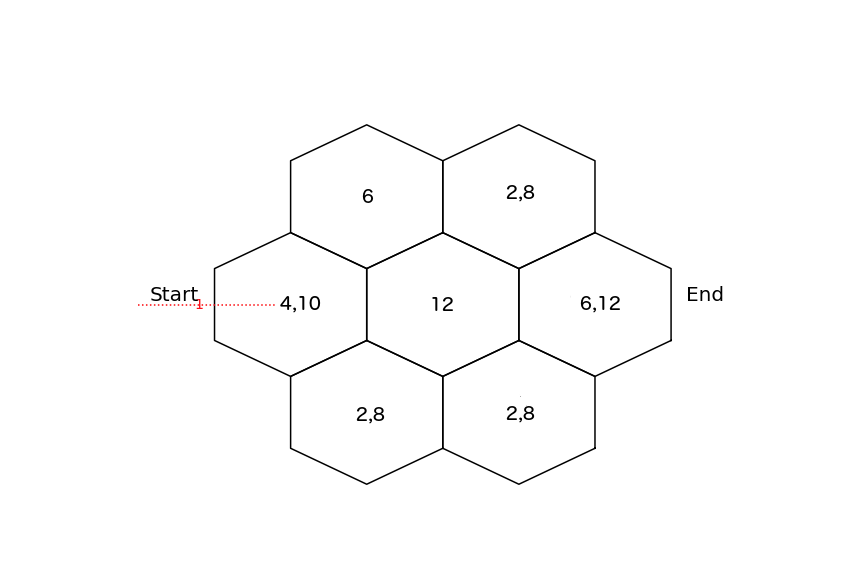Here is an example of a maze I'm calling the beehive clock maze:
Rules. Let's call the hexes TL, TR, L, M, R, BL, and BR (for top-left, top-right, etc).
- You start outside and to the left and step into the L hex facing right.
- The L hex has the numbers 4, 8, 10, and 12 on it, referring to the respective clock positions. 12 is straight ahead, 6 is behind you, 2 is to your right and slightly in front, 4 is to your right and slightly behind. You get the idea.
- Since you start facing right, the 12 on the L hex tells you that you can move to the M hex (and still be facing right). And the 10 on the L hex tells you that you can move to the TL hex, in which case you'll be facing up and a little to the right.
- Suppose you move to the TL hex. You now have the option of turning around and going back to the L hex (the 6 o'clock move); or moving to the TR hex (the 2 o'clock move (you'd be facing right if you did this)); or moving to the M hex (the 4 o'clock move (you'd be facing the bottom right of the screen if you did this)).
In this case, you could solve the maze in 7 steps:

Here's a simple example that takes 13 steps and doesn't use the bottom two hexes (in fact it's a simple pattern to get through):
The challenge is to find the maze with the most number of steps.
Clarifications of the challenge:
- You must provide the o'clocks for each of the hexagons shown. Your maze will have the same start and end as above and the same hexagon configuration. Only the numbers will change.
- The solution will always be the shortest route through the maze. A maze that cannot be solved will not count. A maze with multiple solutions will have only its shortest route as the score.
- It doesn't matter whether the maze is "difficult" or not.
- For benchmarking purposes I have a solution with 21 steps. I suppose 26 is an upper bound since there are 25 states (bonus challenge for the comments: check that statement! - Answered by @athin who realized my original statement of 25 upper bounds and 24 states was off by one since I forgot to count the very first state).






